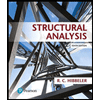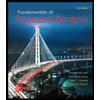What is the estimated batch weight (in Ibs) of cement per yd°? Round off to the whole number.
What is the estimated batch weight (in Ibs) of cement per yd°? Round off to the whole number.
Chapter2: Loads On Structures
Section: Chapter Questions
Problem 1P
Related questions
Concept explainers
Question

Transcribed Image Text:Concrete is required for a foundation located
below ground where no substantial freezing
and thawing occur. The 28-day compressive
strength should be 3,000 psi. The slump
should be 1 to 2 in. and the maximum
aggregate size should not exceed % in.
The properties of the materials are as
follows:
Cement : Type I, specific gravity = 3.15
Coarse Aggregate: Bulk specific gravity (SSD)
= 2.82; absorption capacity 3%; dry-rodded
unit weight = 100 lb./ft.; surface moisture =
0%; Moisture content = 3%
%3D
Fine Aggregate: Bulk specific gravity (SSD) =
2.60; absorption capacity = 1.3%; fineness
modulus = 2.70; surface moisture = 2%;
Moisture content = 3.3%
Use the following table:
TABLE 1. Approximate mixing water
(Ib./yd.3) and air content for different slumps
and nominal maximum sizes of aggregates
Non-Air-Entrained Concrete
Maximum aggregate size (in)
0.5
0.375
350
Slumpfin)
t to 2
3 to 4
6 to 7
0.75
15
335
385
410
315
340
360
300
325
340
275
300
315
260
285
300
220
245
270
190
210
365
385
Air Content
3.0%
2.5%
2.0%
1.5%
1.0%
0.%
0.3%
0.2%
Air-Entrained Concrete
Maximum aggregate size fn.)
1.5
250
275
290
Slumpfin)
1 to 2
3 to 4
6 to 7
Air Content
0.375
305
0.5
295
325
0.75
280
270
295
240
225
180
340
365
305
325
265
200
250
270
200
345
310
2.5%
45%
Mild
4.5%
4.0%
5.5%
3.5%
5.0%
3.0%
4%
2.0%
4.0%
5.0%
1.9%
3.9%
1.0%
Moderate
Extreme
3.0%
4.0%
7.5%
T.0%
6.0%
6.0%
5.5%
TABLE 2. Relationship between
water/cement ratio and compressive
strength of concrete
28-day Compressive Non-AE
Strength (psi)
2,000
3,000
4,000
5,000
AE
0.82
0.74
0.68
0.59
0.57
0.48
0.48
0.40
6,000
0.41
0.32
7,000
0.33
TABLE 3. Volume of dry-rodded coarse
aggregate per unit volume of concrete for
different coarse aggregates and fineness
moduli of fine aggregates
Max Aggregate (in.)
0.375
Fineness Modulus
27
0.47
24
0.50
0.59
0.66
0.71
0.75
25
0.40
0.58
0.65
0.70
0.74
0.77
2.6
2.8
0.40
0.55
0.62
0.67
0.71
0.74
29
0.45
0.44
0,48
0.57
0.64
0.09
0.73
0.76
0.500
0,750
0.56
0,63
0.68
0.72
0.75
0.54
0.01
0.00
0.70
0.73
0.77
0.2
0.53
0.60
0.65
0.69
0.72
0.76
1.000
1.500
2.000
3.000
6.000
0.78
0.82
0.81
0.80
0.85
0.79
0.78
0.84
0.83

Transcribed Image Text:What is the estimated batch weight (in Ibs) of
cement per yd°? Round off to the whole
number.
Expert Solution
This question has been solved!
Explore an expertly crafted, step-by-step solution for a thorough understanding of key concepts.
Step by step
Solved in 5 steps with 8 images

Knowledge Booster
Learn more about
Need a deep-dive on the concept behind this application? Look no further. Learn more about this topic, civil-engineering and related others by exploring similar questions and additional content below.Recommended textbooks for you


Structural Analysis (10th Edition)
Civil Engineering
ISBN:
9780134610672
Author:
Russell C. Hibbeler
Publisher:
PEARSON

Principles of Foundation Engineering (MindTap Cou…
Civil Engineering
ISBN:
9781337705028
Author:
Braja M. Das, Nagaratnam Sivakugan
Publisher:
Cengage Learning


Structural Analysis (10th Edition)
Civil Engineering
ISBN:
9780134610672
Author:
Russell C. Hibbeler
Publisher:
PEARSON

Principles of Foundation Engineering (MindTap Cou…
Civil Engineering
ISBN:
9781337705028
Author:
Braja M. Das, Nagaratnam Sivakugan
Publisher:
Cengage Learning

Fundamentals of Structural Analysis
Civil Engineering
ISBN:
9780073398006
Author:
Kenneth M. Leet Emeritus, Chia-Ming Uang, Joel Lanning
Publisher:
McGraw-Hill Education


Traffic and Highway Engineering
Civil Engineering
ISBN:
9781305156241
Author:
Garber, Nicholas J.
Publisher:
Cengage Learning